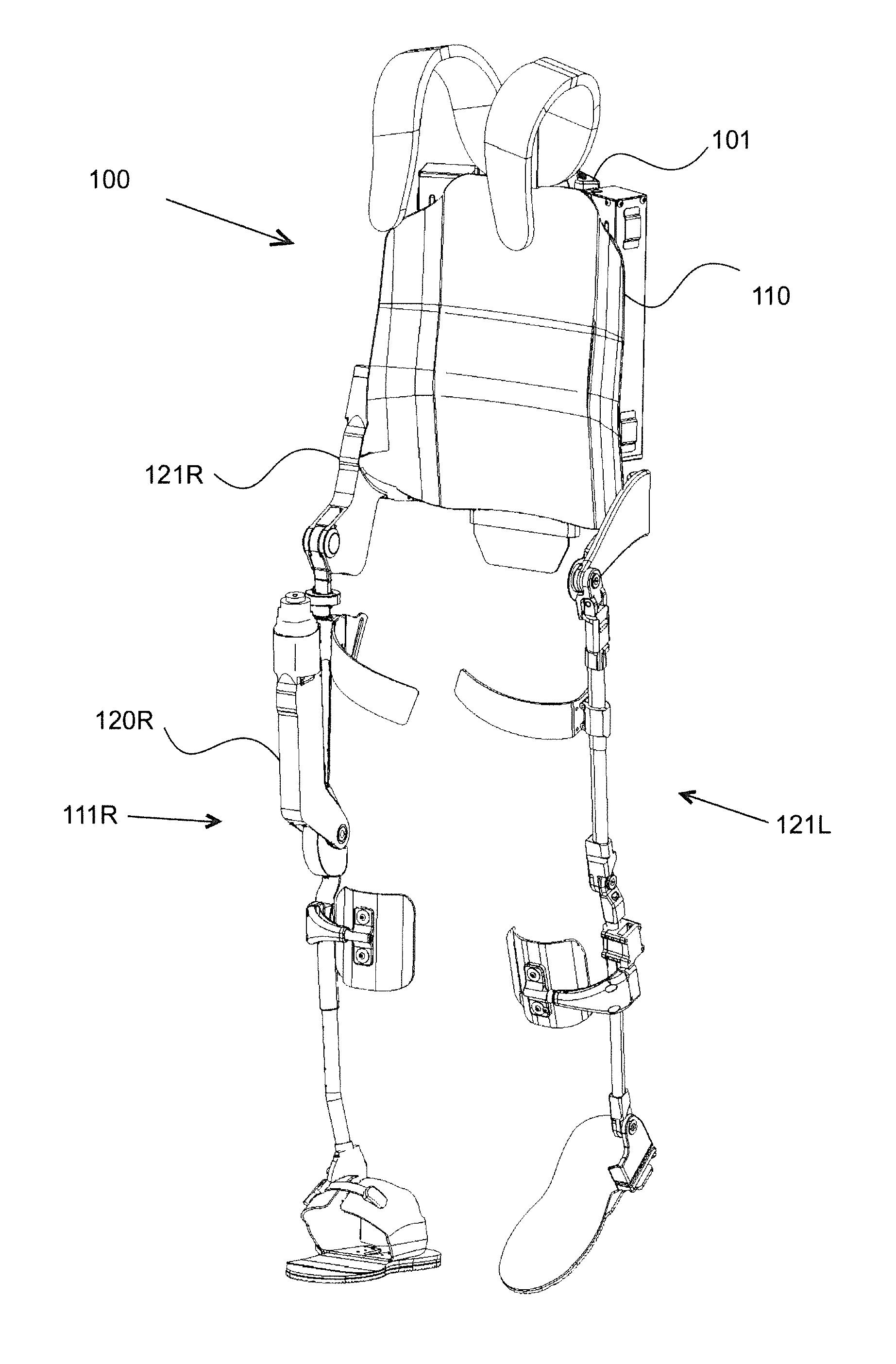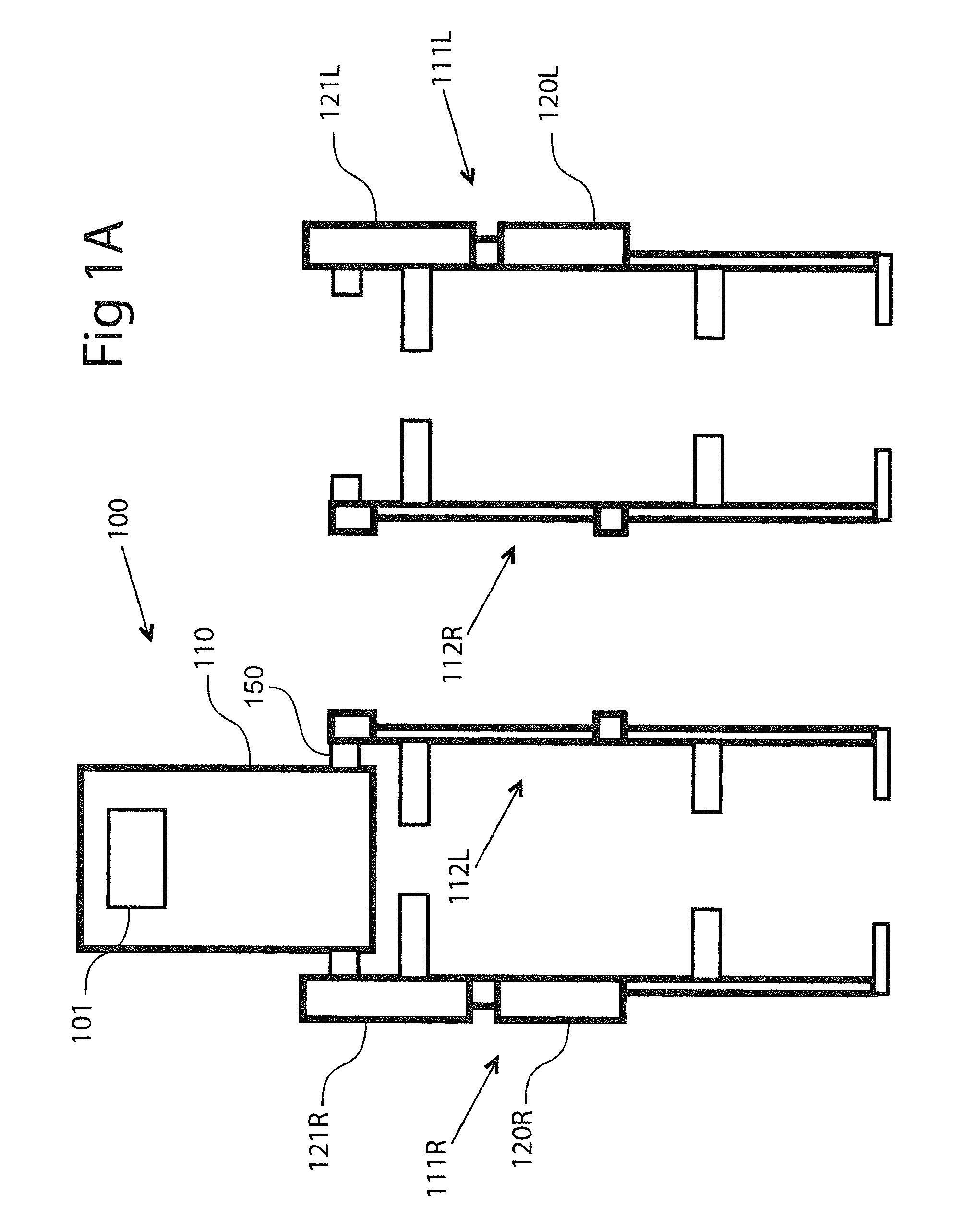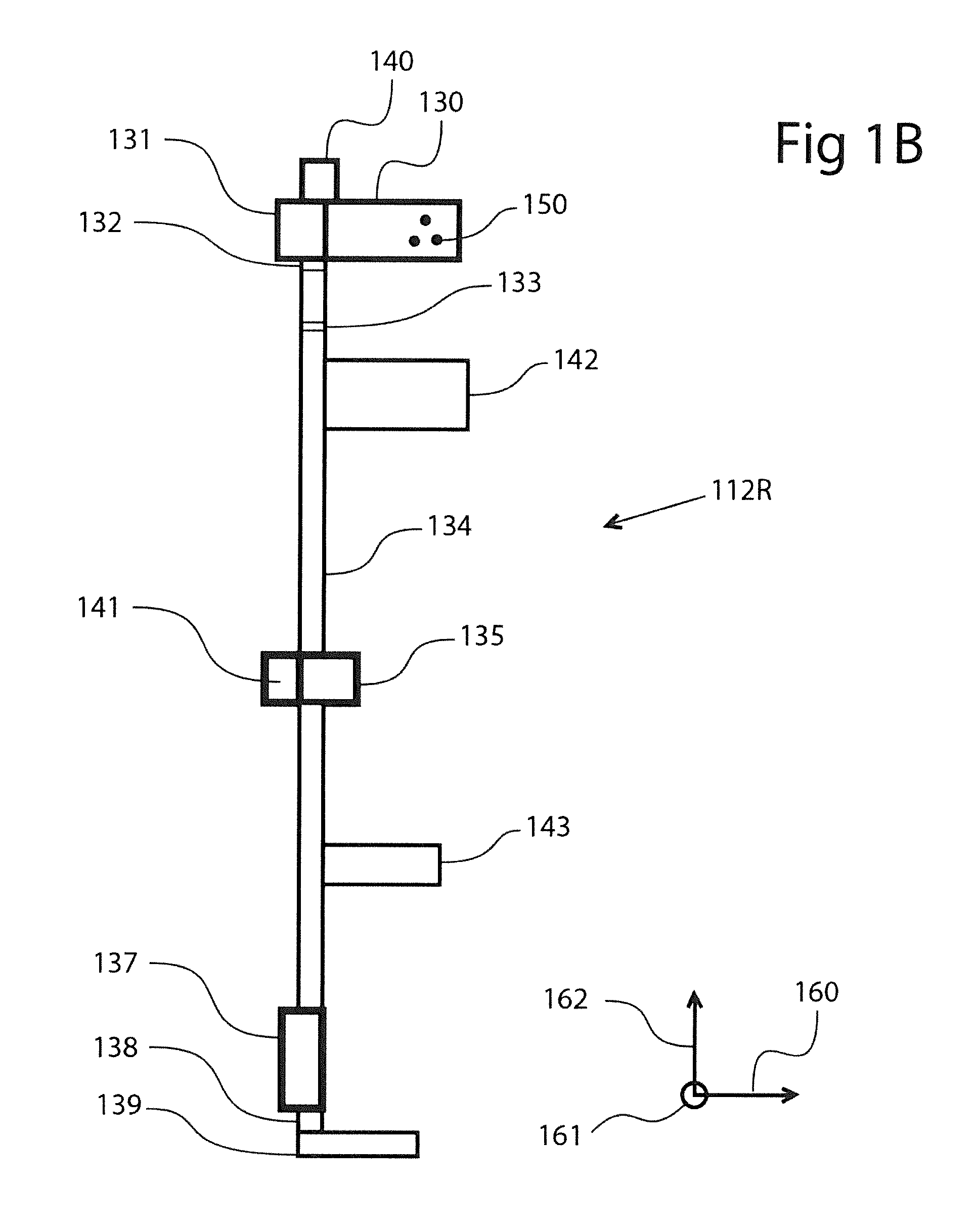Reconfigurable Exoskeleton
- Summary
- Abstract
- Description
- Claims
- Application Information
AI Technical Summary
Benefits of technology
Problems solved by technology
Method used
Image
Examples
Embodiment Construction
[0024]Extensive testing performed with stroke patients done under a human subject protocol suggested that stroke patients with a chronic injury can benefit from an exoskeleton where the legs may be swapped so that only one side of the exoskeleton is actuated. This knowledge led to a first category of modular systems incorporating torque modifiers in accordance with the invention as will now be described. In general, the first embodiment allows a single exoskeleton to enable paraplegics to walk and aid in the gait training of stroke patients. These two populations are best served by different configurations of an exoskeleton device. A complete paraplegic may lack any muscular control below a certain level; in this case each degree of freedom of the person must be controlled—either with a motor, a passive element such as a spring or a damper, or by simply locking the degree of freedom altogether. Conversely, a stroke patient may have a less affected side with almost normal muscular co...
PUM
 Login to View More
Login to View More Abstract
Description
Claims
Application Information
 Login to View More
Login to View More - R&D
- Intellectual Property
- Life Sciences
- Materials
- Tech Scout
- Unparalleled Data Quality
- Higher Quality Content
- 60% Fewer Hallucinations
Browse by: Latest US Patents, China's latest patents, Technical Efficacy Thesaurus, Application Domain, Technology Topic, Popular Technical Reports.
© 2025 PatSnap. All rights reserved.Legal|Privacy policy|Modern Slavery Act Transparency Statement|Sitemap|About US| Contact US: help@patsnap.com



